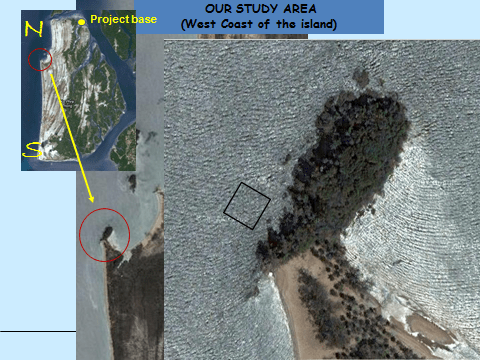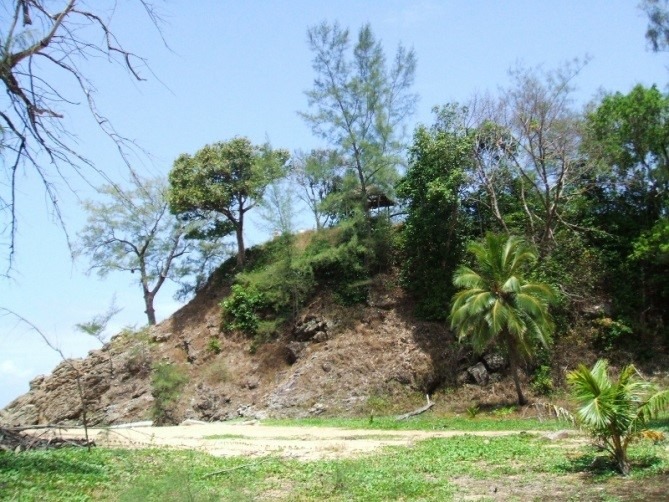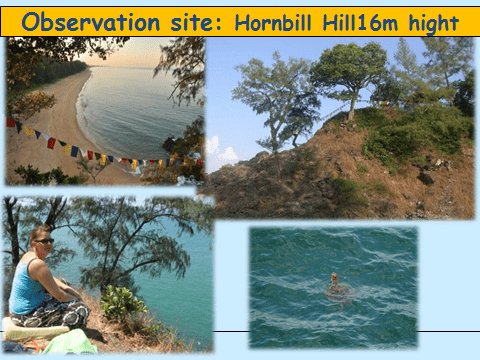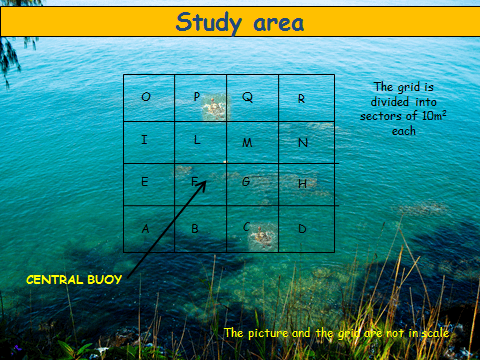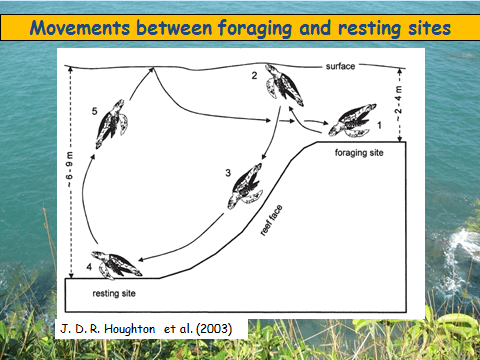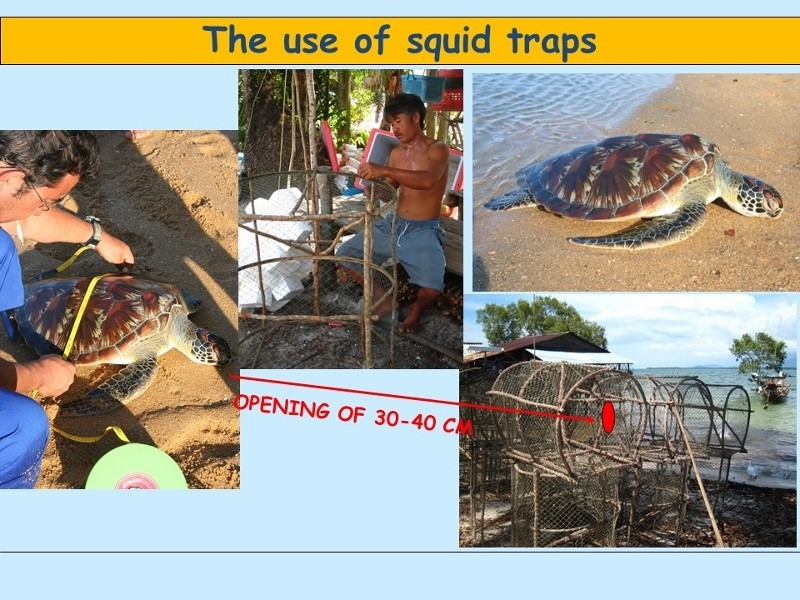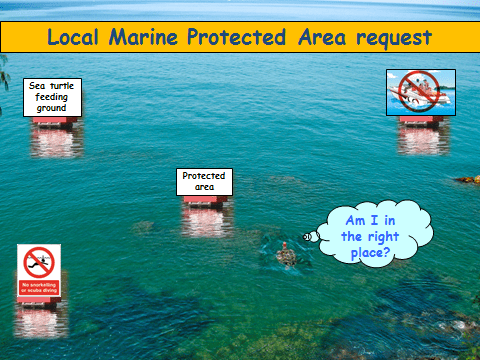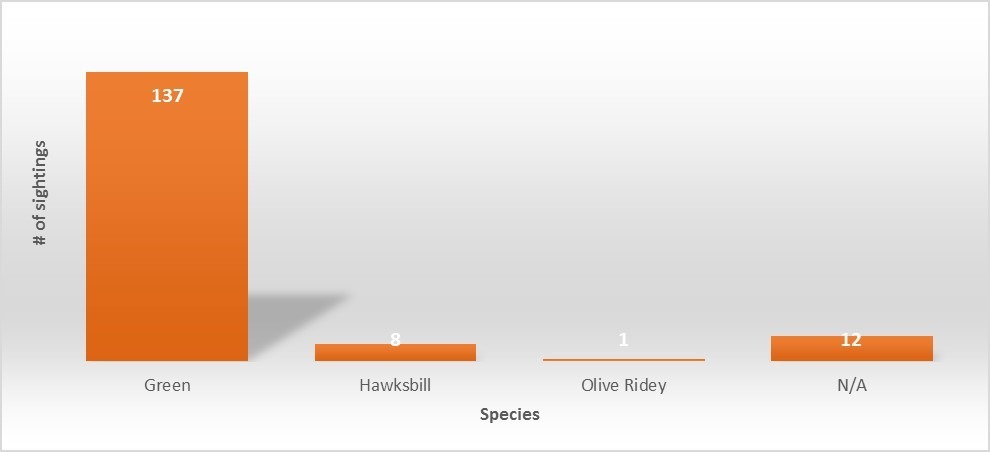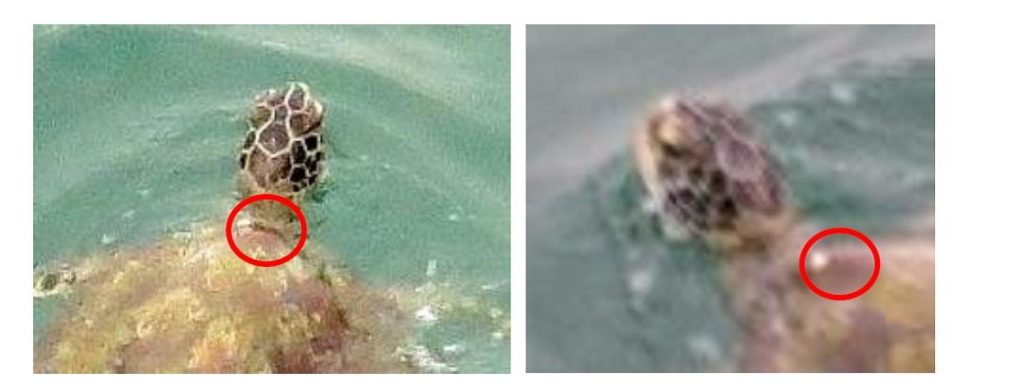The Google location indicates the study area along the west coast of Koh Phra Thong. The observation point is highlighted in the Google satellite image: the squares identify the study area in the sea and the area covered with trees represents the observation hill.
The observation site is named Hornbill Hill It is 16 m high and from there, volunteers can sit down and observe the immediate area of sea. For behavioural ecologists, the ability to observe animals in their natural habitat is fundamental but for large aquatic animals such as sea turtles, it can prove difficult. We started these observations in 2006, to assess the importance and relevance of this area, for studying turtle behaviour. Volunteers spent approximately two hours at each observation session on the hill and recorded different sightings of Green and Hawksbill turtles swimming there. The following season, in 2007, we officially set up the study area and conducted the survey on a regular basis, collecting more detailed information.
Regular observations were planned and conducted.
Naucrates highlighted the area in the water where most sightings occurred and established a study area.
Sightings are frequent and data is collected during the two hours of observations every day. The data collected during each section of an observation is: weather condition including sea temperature, record sightings, species, behaviour: swimming, basking, breathing, emerging time, location within the grid and transect underwater. The latter was conducted to identify the presence of food that turtles eat, underwater (for example, sea grass and seaweeds…).
One day in 2007 Naucrates team found a dead juvenile Green turtle in a fishing cage, placed by fisherman in the study area.
Since then, Naucrates efforts focus on collecting data, to demonstrate the importance of this area of feeding ground. Collected data is published and presented to the local Government institution, in order to plan a marine protected area.
The area is used by turtles, mainly for feeding, sometimes for sleeping or just passing through!
Between 2016 and 2019, the most common sighting has been the Green turtle, observed 137 times, followed by the Hawksbill, with 8 sightings. Leatherback and Olive Ridley turtles have never been recorded in the study area.
In 2018 a database was created, by taking pictures of turtles during each observation session, whenever possible. Pictures collected throughout the season were chosen as references to be used to identify juvenile sea turtle individuals. Characteristics used for identification in-situ were; turtle size, species and presence of epibionts on the shell while facial scales were usable for identification from photographs. Whenever possible the turtle’s identification was noted, in order for us to understand the potential population size of visiting juvenile turtles.




